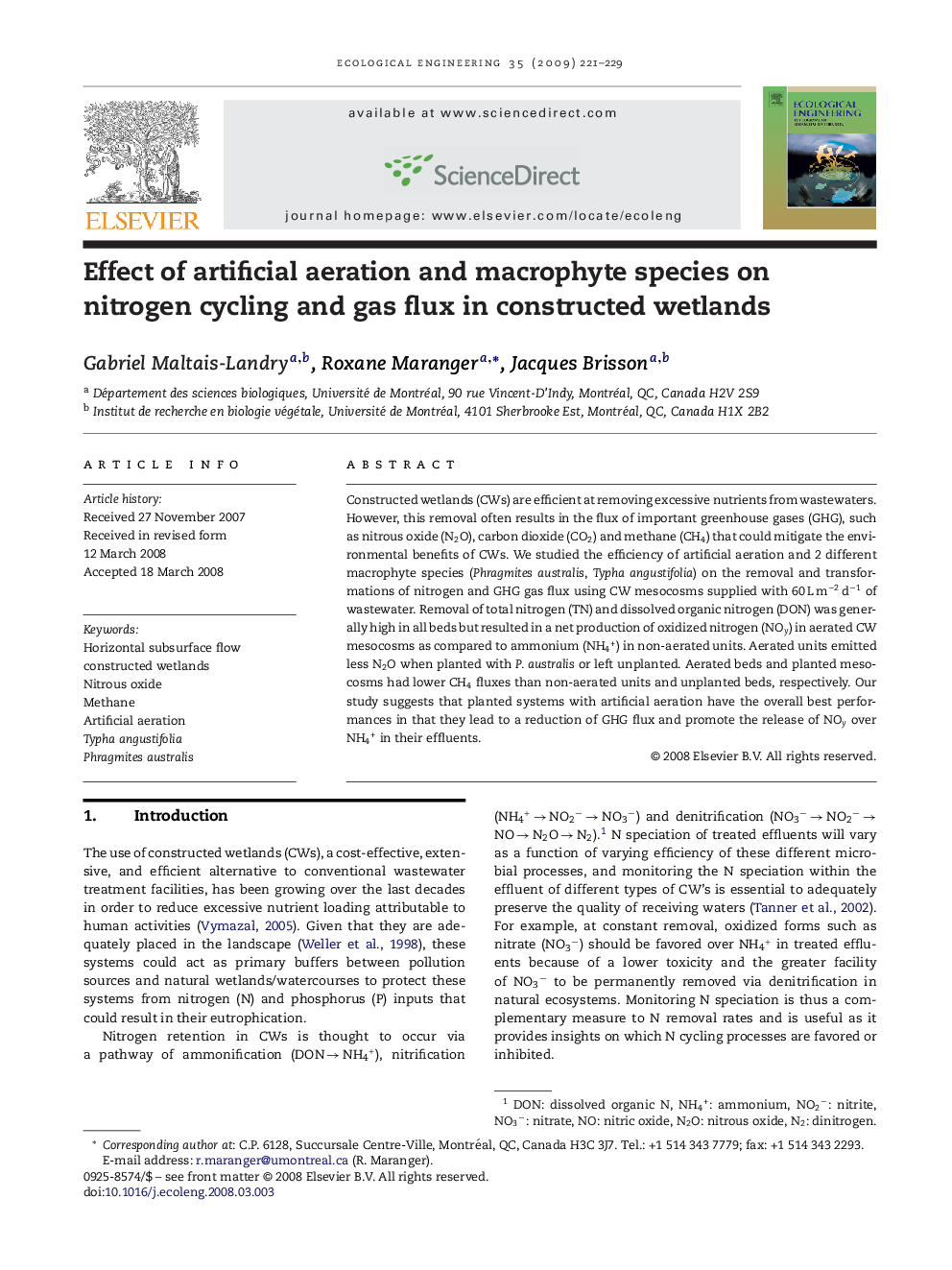| Article ID | Journal | Published Year | Pages | File Type |
|---|---|---|---|---|
| 4391021 | Ecological Engineering | 2009 | 9 Pages |
Constructed wetlands (CWs) are efficient at removing excessive nutrients from wastewaters. However, this removal often results in the flux of important greenhouse gases (GHG), such as nitrous oxide (N2O), carbon dioxide (CO2) and methane (CH4) that could mitigate the environmental benefits of CWs. We studied the efficiency of artificial aeration and 2 different macrophyte species (Phragmites australis, Typha angustifolia) on the removal and transformations of nitrogen and GHG gas flux using CW mesocosms supplied with 60 L m−2 d−1 of wastewater. Removal of total nitrogen (TN) and dissolved organic nitrogen (DON) was generally high in all beds but resulted in a net production of oxidized nitrogen (NOy) in aerated CW mesocosms as compared to ammonium (NH4+) in non-aerated units. Aerated units emitted less N2O when planted with P. australis or left unplanted. Aerated beds and planted mesocosms had lower CH4 fluxes than non-aerated units and unplanted beds, respectively. Our study suggests that planted systems with artificial aeration have the overall best performances in that they lead to a reduction of GHG flux and promote the release of NOy over NH4+ in their effluents.
